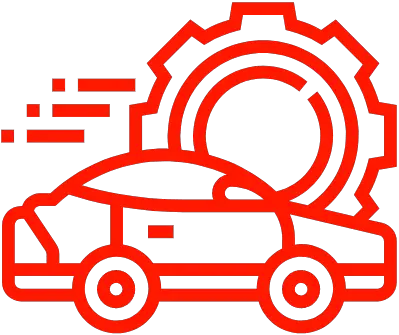Troubleshooting Tips for When Your Car Won’t Move in Drive or Reverse
Car not moving in drive or reverse is a common issue that may be caused by various issues. Possible causes for this issue include:
1. Low transmission fluid or other fluid levels: Low fluid levels can cause transmission components to wear out, reducing the car’s ability to move. Check the vehicle’s owners manual for the proper type and amount of fluid needed for your car.
2. Worn out brakes or tires: If your brakes are worn out, they may not be able to generate enough friction to move the car forward or backward. Additionally, worn tires can reduce traction and make it difficult for the car to move in either direction.
3. Faulty transmission: A faulty transmission can prevent a car from moving in either direction as it prevents the power from being transferred from the engine to the wheels of the car.
4. Clutch issues: Clutch problems can prevent a car from moving in either direction as it prevents power from being transferred from the engine to the wheels of the car when depressing the clutch pedal.
The best way to diagnose and repair this issue is by bringing your vehicle into an experienced mechanic who can locate and fix any underlying issues with your vehicle.
Automobile: Car Not Moving in Drive or Reverse
Lack of Power
One of the most common reasons why a car may not be moving in drive or reverse is due to a lack of power. This can be caused by low levels of fuel, a faulty fuel pump, or an electrical issue. If the car is not getting enough power, it will struggle to move forward or in reverse. To troubleshoot this issue, check the fuel levels first and ensure that there is enough fuel in the tank. If there is sufficient fuel, then move on to checking the fuel pump and any associated wiring. If there are no problems with the fuel system, then it is likely an electrical issue and should be inspected by a qualified mechanic.
Transmission Problems
Transmission problems can also cause a car to not move in drive or reverse. Common signs of transmission issues include difficulty shifting gears, grinding noises when shifting gears, and slipping between gears. To diagnose a transmission issue, it is important to inspect all components of the transmission system and look for any signs of damage or wear. If necessary, have a qualified mechanic inspect the system for any potential issues.
Defective Clutch
If the car has manual transmission, then it may be an issue with the clutch if it does not move in drive or reverse. A defective clutch can cause difficulty engaging gears and can lead to grinding noises when attempting to shift into gear. To identify a faulty clutch, inspect all components associated with it including the pressure plate, release bearing, and slave cylinder. If necessary have a qualified mechanic inspect these parts for any damage or wear.
Bad Gearbox
A bad gearbox can also cause a car to not move in drive or reverse. Common signs that indicate a bad gearbox are hard shifts between gears as well as difficulty engaging certain gears while driving. To diagnose this issue properly it is important to inspect all components associated with the gearbox such as shift rods, selector forks, synchronizers etc., as well as check for any signs of wear or damage on these parts. If necessary have a qualified mechanic inspect these parts for any potential issues.
Broken Axles
Broken axles can also cause cars not to move in drive or reverse due to lack of power being transferred from engine to wheels via axle shafts. To diagnose this issue properly it is important to inspect all axle shafts for any signs of damage such as cracks on outer surface which may indicate broken axle shafts .If necessary have a qualified mechanic inspect these parts for any potential issues before replacing them with new ones if required
Checking the Battery and Cables
It is essential to check the battery and cables when diagnosing a car not moving in drive or reverse. The battery should have a charge of at least 12.6 volts, and all its cables should be securely attached. Any loose cable connections should be tightened, and any corroded terminals should be cleaned with a wire brush. If the battery has a low charge, it may need to be replaced or recharged.
Testing the Transmission Fluid Level
The transmission fluid level should also be checked when diagnosing a car not moving in drive or reverse. The transmission fluid level should be checked both when the engine is cold and hot, as it can expand in hot temperatures. If the fluid level is low, it could indicate a leak or an internal problem such as worn seals or gaskets. The transmission fluid should also be checked for signs of contamination such as metal particles or discoloration, which could indicate an internal problem with the transmission.
Inspecting the Clutch for Wear and Tear
The clutch is another important component to inspect when diagnosing a car not moving in drive or reverse. A worn clutch can prevent the car from engaging into gear, so it’s important to check for any signs of wear such as slipping or shuddering when shifting gears. The clutch pedal should also be inspected for any signs of sticking or binding, which could indicate an issue with the hydraulic system that operates the clutch.
Investigating the Gearbox for Malfunction
If there is no issue with the battery, cables, transmission fluid level, or clutch then it is necessary to investigate further into why the car isn’t engaging into gear by examining the gearbox for malfunctions. This involves checking that all gears are engaging properly by manually manipulating them while listening for any strange noises coming from within the gearbox that could indicate an issue with one of its components such as broken gears or seized bearings. It may also involve using diagnostic equipment to inspect each individual component within the gearbox to identify any faults that would prevent it from working properly and engaging into drive or reverse gears correctly.
Examining Axles for Damage or Obstruction
Finally, if all other components appear to be functioning correctly then it’s necessary to examine both axles for any obstructions preventing them from turning freely such as rocks lodged between them or damaged bushings that bind them up when turning. It’s also important to look out for any signs of physical damage on either axle such as dents caused by potholes which could prevent them from rotating freely resulting in a vehicle not being able to engage into gear correctly even though all other components appear to be functioning correctly.
FAQ & Answers
Q: What could be the reason behind a car not moving in drive or reverse?
A: There can be several reasons why a car may not move in drive or reverse, such as lack of power, transmission problems, a defective clutch, a bad gearbox, or broken axles.
Q: What are some troubleshooting strategies to resolve this issue?
A: Troubleshooting strategies to resolve this issue include checking the battery and cables, testing the transmission fluid level, inspecting the clutch for wear and tear, investigating the gearbox for malfunction, and examining the axles for damage or obstruction.
Q: How can I diagnose a car not moving in drive or reverse?
A: To diagnose a car not moving in drive or reverse, you can use diagnostic tools such as an OBD-II scanner to check for error codes that could indicate what is causing the issue. You can also use an engine analyzer to check for mechanical issues that might be causing the problem.
Q: Are there any preventive measures I can take to avoid this issue?
A: Yes, there are several preventive measures you can take to avoid this issue. These include regularly checking your vehicle’s oil levels and ensuring they are at the manufacturer’s recommended levels; maintaining your vehicle’s transmission; and regularly inspecting your vehicle’s axles and other components for signs of wear and tear.
Q: What should I do if my car still is not moving in drive or reverse after trying all these troubleshooting strategies?
A: If your car still is not moving in drive or reverse after trying all these troubleshooting strategies, then it is best to consult with a certified mechanic who will be able to accurately diagnose and repair any issues with your vehicle.
In conclusion, when a car isn’t moving in drive or reverse, there can be many potential causes. It can be as minor as a system malfunction or as serious as a transmission issue. If the car isn’t moving in drive or reverse, it is important to consult an experienced mechanic to diagnose the issue and fix it properly.
Author Profile

-
With more than 30 years in the bicycle industry, I have a strong background in bicycle retailing, sales, marketing and customer service. I have a passion for cycling and a dedication to excellence. As a manager, I worked diligently to increase my capabilities and responsibilities, managing up to eleven mechanics (at Palo Alto Bicycles) and later as a working partner in my own store.
As the shop owner of Spoke n’ Word Cycles in Socorro, NM, the success of the mission was my responsibility, which I pursued passionately since we opened in 2003 through the spring of 2011. I am adept at managing owned and loan inventory, preparing weekly & annual inventory statements, and managing staff. The role as managing partner also allowed me tremendous freedom. I used this personal freedom to become more deeply involved in my own advancement as a mechanic, to spearhead local trail building, and advocating for cycling both locally and regionally.
As a mechanic, I have several years doing neutral support, experience as a team mechanic, and experience supporting local rides, races, club events. I consistently strive to ensure that bicycles function flawlessly by foreseeing issues and working with the riders, soigners, coaches and other mechanics. Even with decades of experience as a shop mechanic and team mechanic, and continue to pursue greater involvement in this sport as a US Pro Mechanic, and UCI Pro Mechanic.
Latest entries
- July 26, 2023BodyFind the Best Grill for Your 2007 Toyota Tacoma – A Complete Guide
- July 26, 2023BodyUpgrade Your Ford Escape with the Best 2008 Grill – Here’s How!
- July 26, 2023Bumper Stickers, Decals And MagnetsBest Chevy 1500 Door Emblem: Upgrade Your Truck with a Stylish Emblem
- July 26, 2023Marker Light AssembliesGive Your 2008 Dodge Dakota a Makeover with the Best Grill Upgrade
